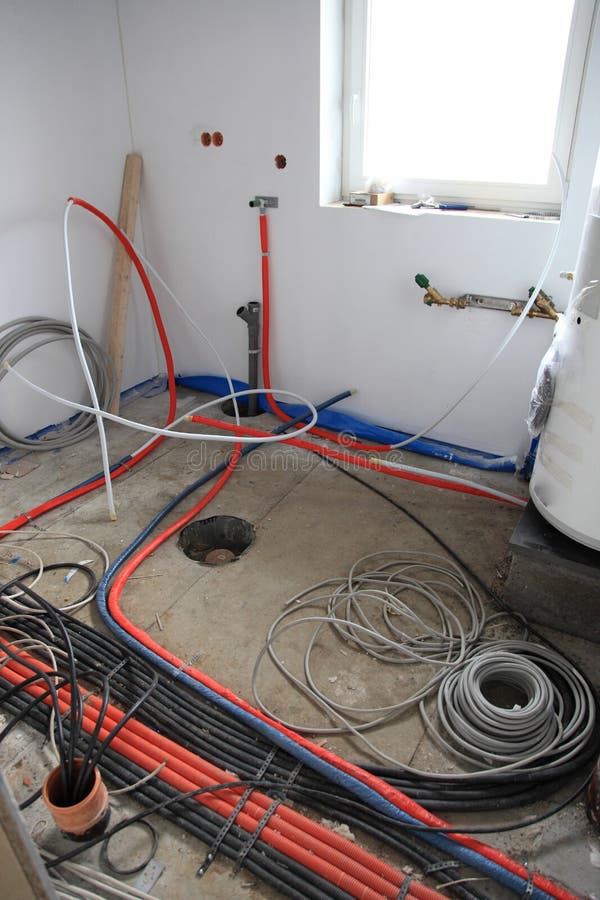Discover the very best in BRE Services for Electrical and Automation
Discover the very best in BRE Services for Electrical and Automation
Blog Article
The Ultimate Guide to Electric Setup: Tips and Methods for a Safe and Efficient Home Circuitry System
In the world of home maintenance, few elements are as crucial yet typically ignored as the electric circuitry system. By exploring the nuances of electrical security actions and energy-saving techniques, this extensive guide will certainly lose light on the details of home circuitry, encouraging individuals to take charge of their household's electric framework.
Comprehending Electrical Safety Measures
To make certain the security of both people and building, understanding and executing correct electrical security measures is vital in any home electrical wiring task. It is important to perform an extensive examination of the electrical system prior to beginning any type of circuitry job to recognize potential dangers or concerns that need to be dealt with.
Furthermore, making use of the suitable tools and devices is crucial for preserving security throughout electric installments. Insulated gloves, voltage testers, and protective eyeglasses are a few of the fundamental security equipment that need to be put on to prevent electrical shocks or mishaps. It is likewise crucial to de-energize circuits prior to functioning on them and to classify all circuits and breakers plainly to prevent complication.

Crucial Devices for Home Electrical Wiring
Ensuring the proper application of electric safety and security actions in home wiring projects involves utilizing a particular set of necessary devices made to promote the installation procedure effectively and safely. Some of the key tools required for home wiring projects include a voltage tester for examining live wires, wire strippers for removing insulation from wires, a cord cutter for specifically reducing cords to size, a screwdriver set for protecting electrical components, electrical tape for insulation and securing links, a wire ripper for removing cord sheathing, and a multimeter for determining voltage, current, and resistance.
Step-by-Step Electrical Installment Overview
Beginning an electrical installation project calls for thorough preparation and adherence to safety and security guidelines. Before beginning any work, ensure you have a detailed plan detailing the design of the electrical system, including the positioning of electrical outlets, switches, and fixtures. Think about the power demands of each device to determine the ideal cable gauge and breaker dimensions.
The primary step in the installment procedure is to turn off the power supply to the area where you will certainly be working. Make use of a voltage tester to confirm that the circuits are de-energized prior to touching any type of wires. Next off, thoroughly remove existing components or outlets and detach the wires.
When setting up brand-new wiring, run cords through walls and ceilings, safeguarding them in place with proper installations. Follow regional building ordinance and producer directions for correct wire setup and links. BRE Electrical. Make certain to classify wires for simple recognition and future upkeep

Troubleshooting Common Wiring Issues
Having finished the installment procedure as detailed in the previous subtopic, fixing typical wiring issues is a vital skill for ensuring the safety and security and capability of your electric system. One common issue is a stumbled circuit breaker, typically triggered by overloaded circuits or a short circuit. To repair this, find the breaker panel, identify the stumbled breaker by trying to find the one not fully in the "on" placement, and reset it by turning it fully to "off" and then back to "on." An additional common problem is a damaged electrical outlet, characterized by no power or periodic power supply. Ensure the electrical outlet is not managed by a button, then use a voltage tester to look for power. If there is no power, transform off the circuit, inspect the electrical wiring connections for any kind of loose or broken wires, and change the outlet if essential. Constantly flickering lights can indicate loose circuitry connections or an overloaded circuit. To resolve this, check and tighten all cord connections in the impacted components and switches and rearrange the load on the circuit to stabilize the electric demand. Routinely evaluating and quickly resolving these common electrical wiring concerns will keep the safety and effectiveness of your home electric system.
Tips for Energy-Efficient Electrical Solutions
For optimal energy effectiveness in electrical systems, carrying out wise methods and making use of energy-saving modern technologies is extremely important. One key suggestion for achieving an energy-efficient electrical system is to upgrade to LED illumination. LED bulbs consume substantially much less energy than standard incandescent light bulbs and have a longer life expectancy, making them a cost-efficient selection in the lengthy run. In addition, mounting programmable thermostats can aid control heating and cooling systems, minimizing energy waste when no one is home. Another approach is to purchase energy-efficient home appliances that are ENERGY STAR licensed, guaranteeing they satisfy high standards for power performance. Appropriate insulation and sealing of home windows, doors, and electric outlets can also prevent power loss, inevitably minimizing the workload on electric systems. Consider including eco-friendly energy sources like solar panels to more reduction reliance on typical power grids. By integrating these energy-efficient advice tips and modern technologies, house owners can not only conserve money on their electrical energy bills yet also lower Learn More their environmental influence.
Verdict
In final thought, applying proper precaution, utilizing necessary tools, following a detailed installment overview, troubleshooting typical concerns, and incorporating energy-efficient suggestions are critical for a safe and effective home circuitry system. By sticking to these methods, homeowners can guarantee the durability and capability of their electric installations. It is essential to focus on safety and effectiveness when it concerns electrical work in order to avoid prospective threats and to keep a dependable electrical system in the home.
Report this page